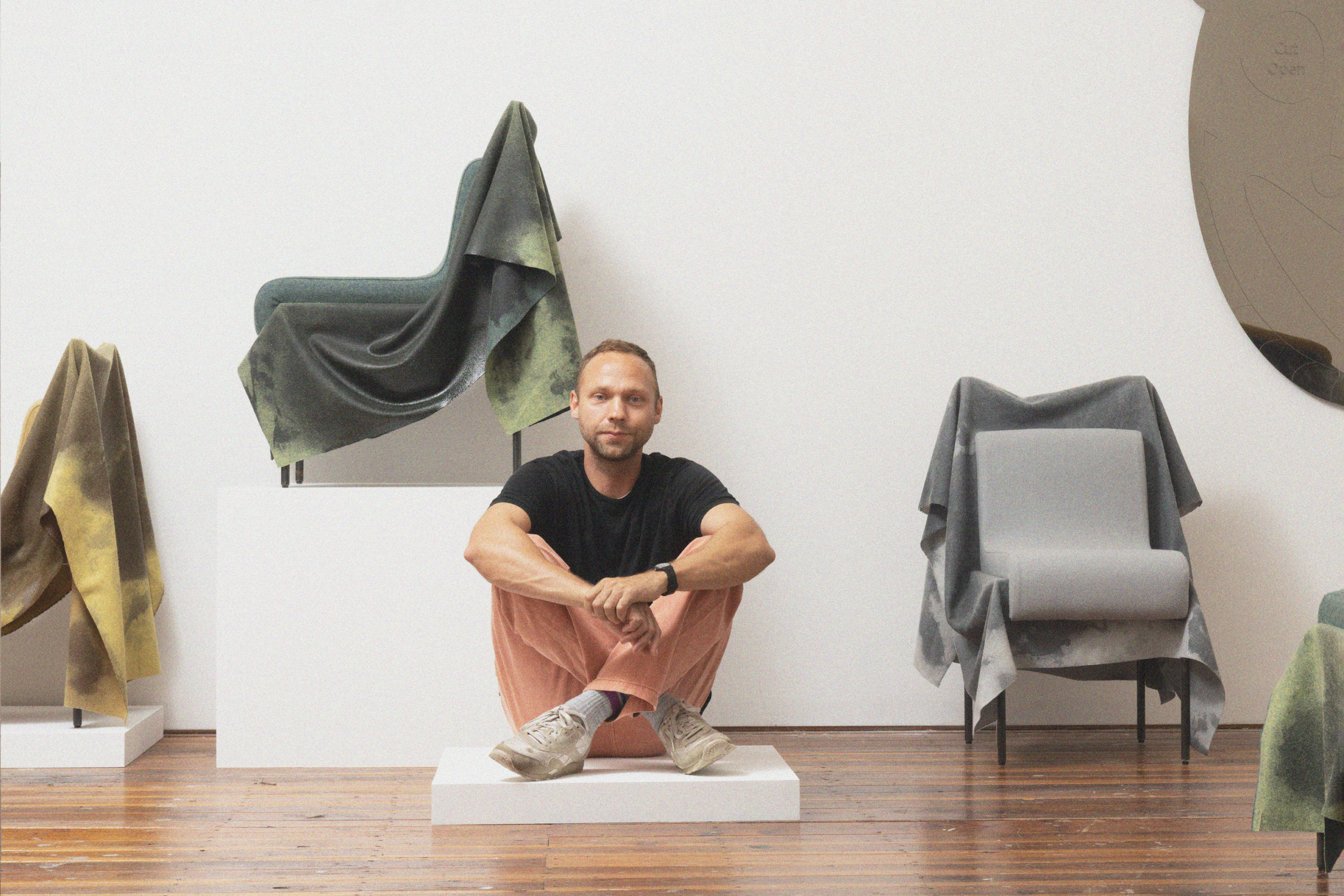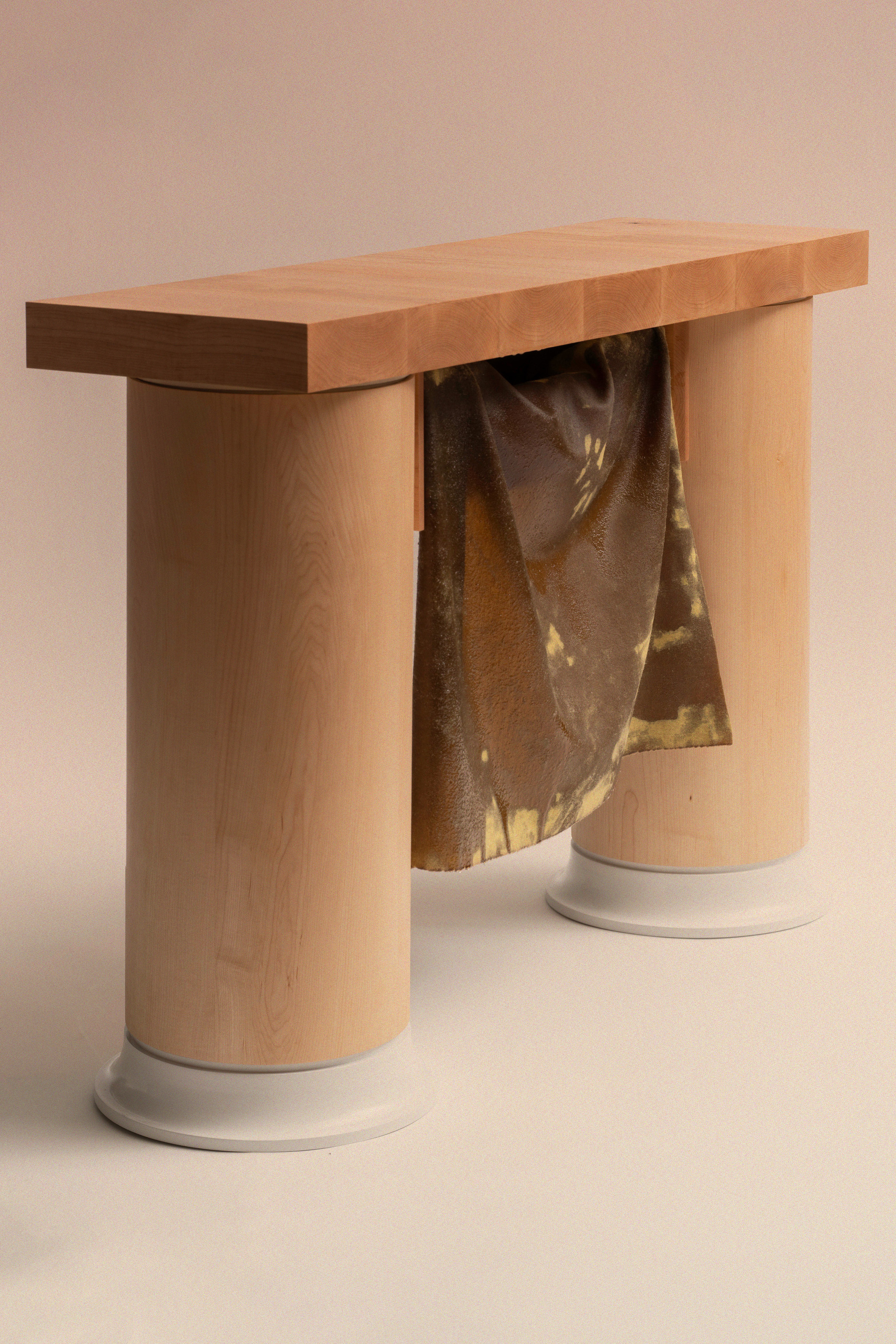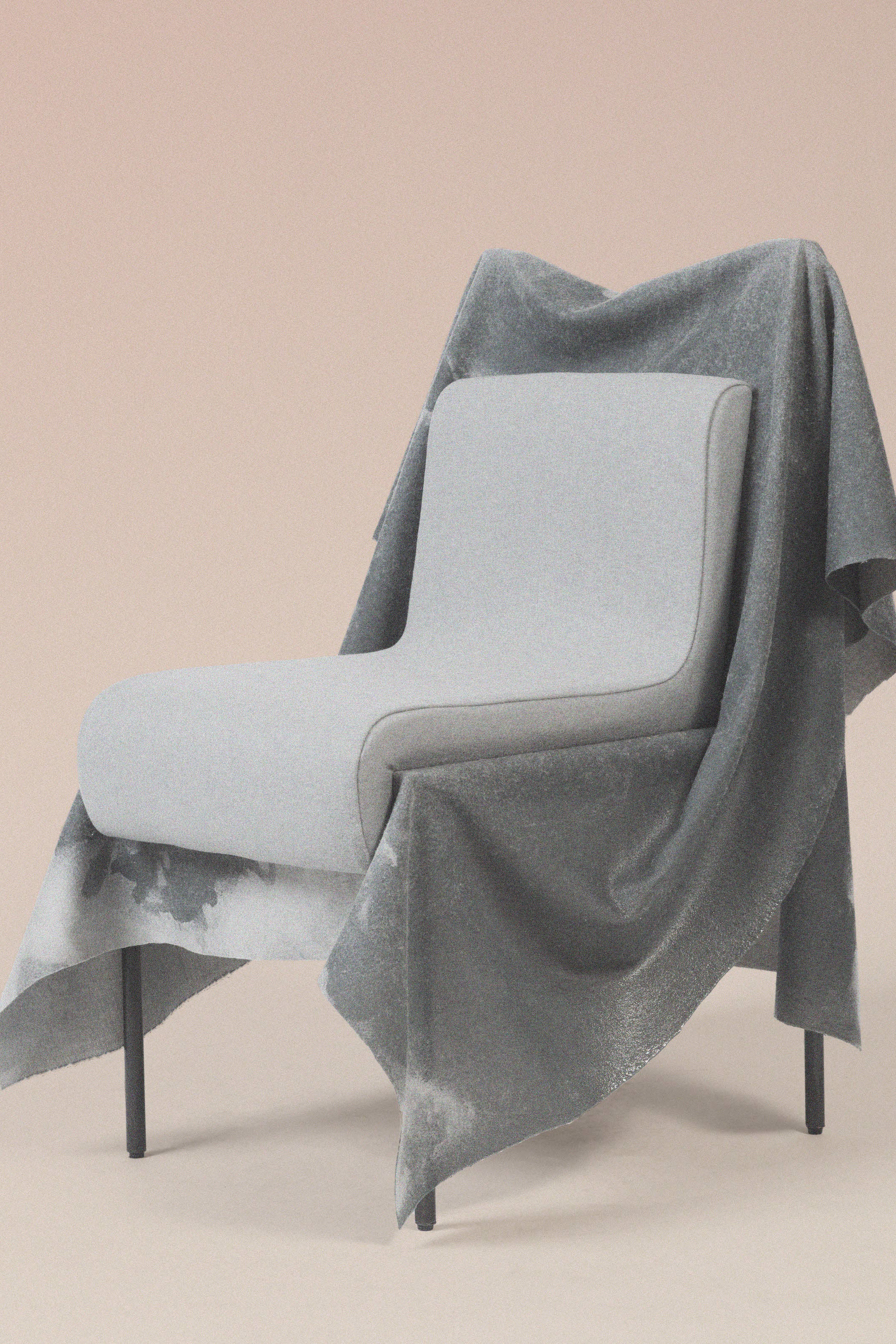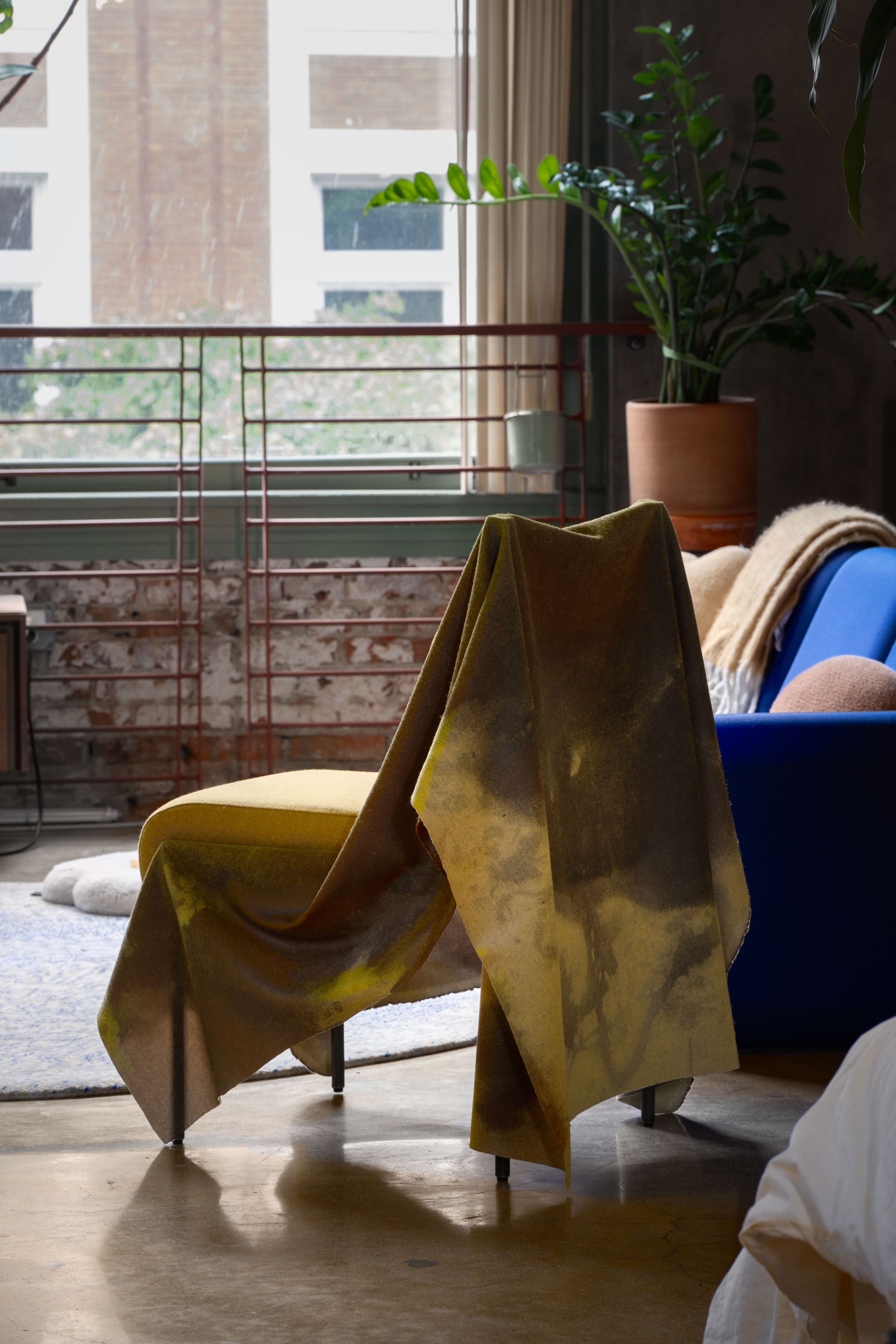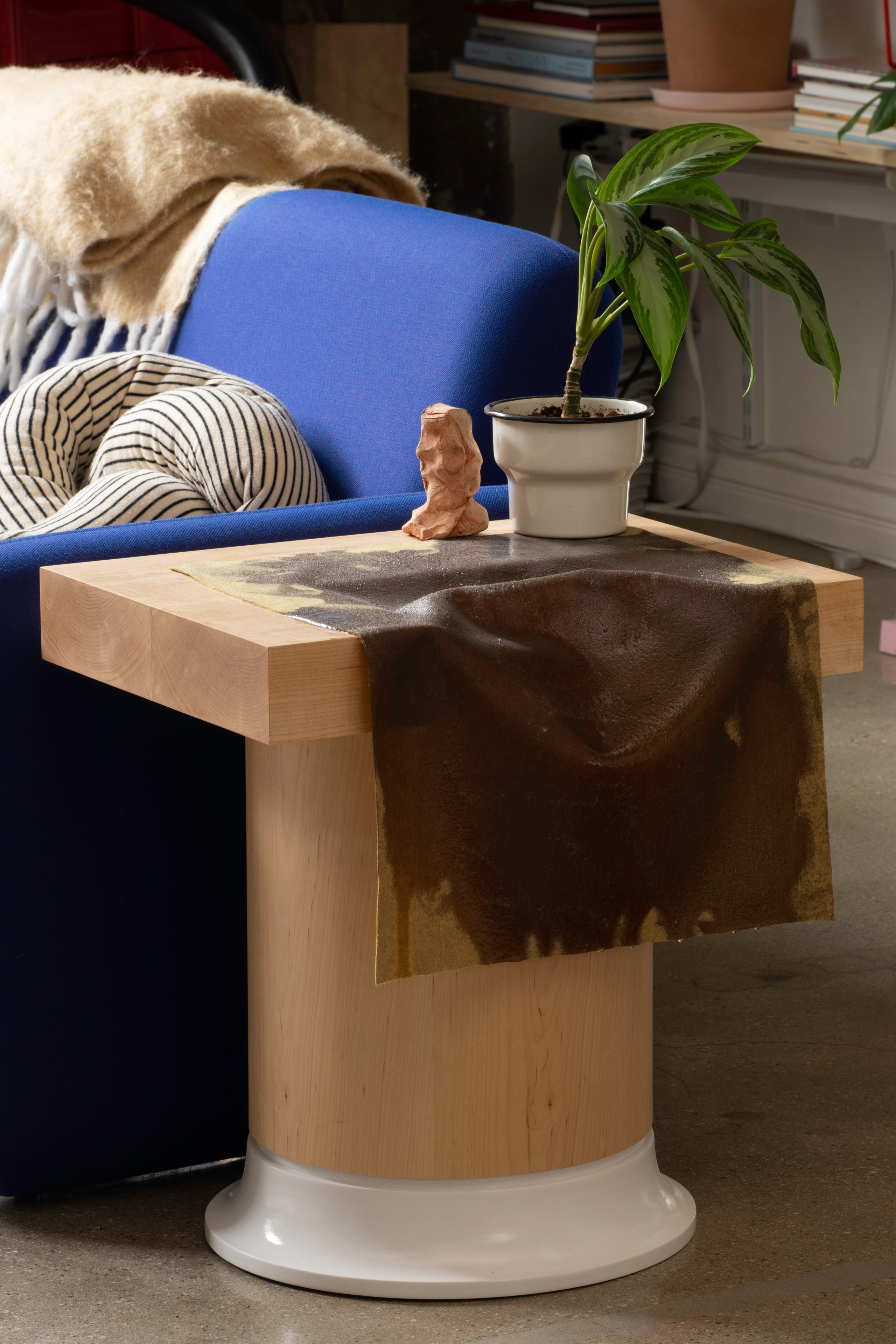Wet Wool, the debut collection by Rest Energy, the studio helmed by Los Angeles artist and designer Caleb Engstrom, is full of contradictions. The namesake fabric looks damp, but is completely dry. It appears weightless and airy, but is stiff in immobile. It embodies fragility, but is functional and sturdy. Embracing optical illusion and theatrics, Caleb turns furniture into performers.
“Things that seem like opposites and their tension or contradiction is interesting to me,” Caleb said in a conversation with Sixtysix. “I think about being a parent who’s dealing with a three-year-old on the daily, then transitioning into conceptually adult conversations. I feel like I live a dialectic life.”
- Wet Wool Console Table. Photo by of.Photo Studio
- Wet Wool Chair in gray. Photo by of.Photo Studio
Caleb has a fine art background and over 15 years experience in art handling and construction. Through his commercial service, Rest Fabrication, he assists with exhibition design for high profile galleries like Regen Projects and François Ghebaly. After mastering pedestals and cabinetry for others, it was time to launch his own collection.
The 10 piece collection comprises chairs, stools, end tables, mirrors, a console and a stackable side table, all of which Caleb constructed himself. Their signature trait is the thick wool fabric that drapes over the side tables, under the stool cushions and behind the backs of the chair. One piece of golden wool is stuffed into the console’s drawer, ready to fall to the ground, but is tightly secured to the wood surface with resin. The compound keeps the wool in its delicate, gravity-defying state, but makes the furniture durable. It also is the key to Wet Wool’s contradictory appearance. On the lacquer top side table, the resin fills a valley that hangs off the surface, a miniature reflecting pool, but running a finger across it reveals a thick, hard surface that preserves the deep folds.
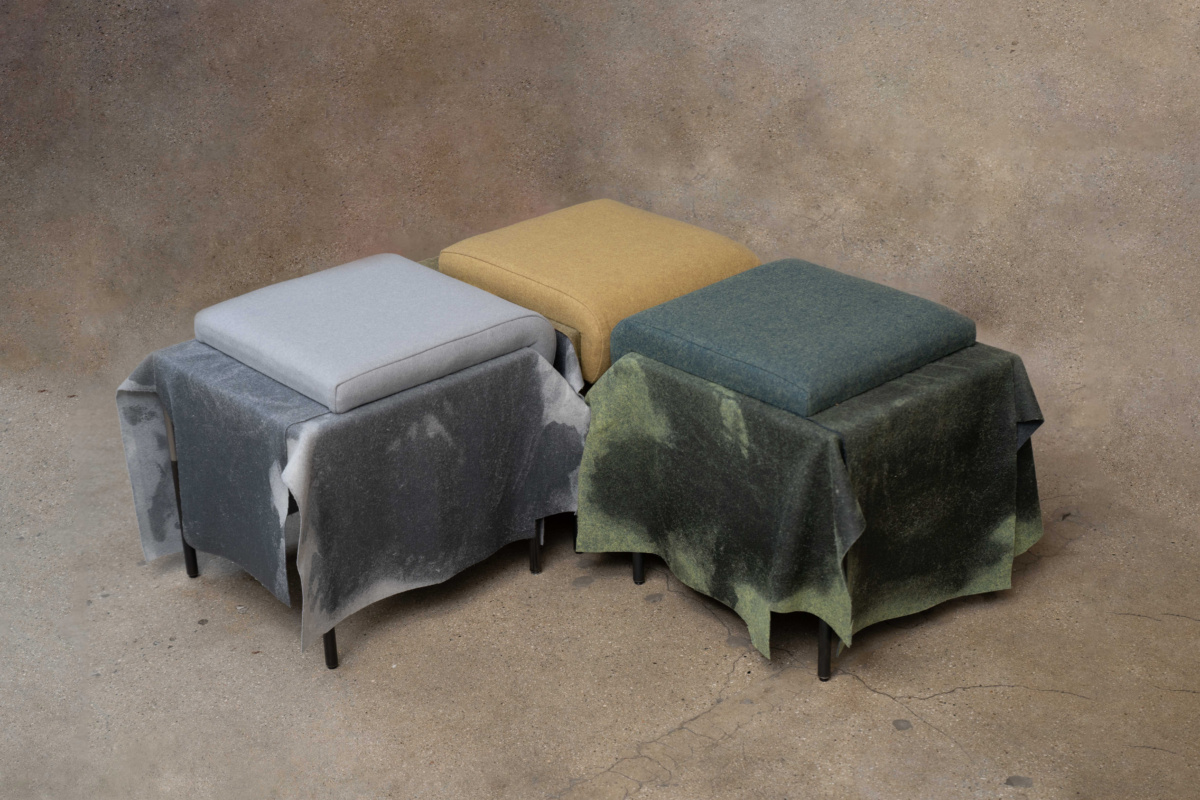
Wet Wool Stools can function as ottomans, poufs, or chairs. Photo by of.Photo Studio
“I think there’s a trompe l’oeil trick going on,” Caleb said. “There’s a theater built into it where you imagine that it has movement, that it’s light and soft.”
Many of Caleb’s visual artworks reference Greek mythology and theater, like the two-channel video installation“Minotaur in Contrapposto (parallax view)” (2018), in which he wears a bull’s bask and a wrestling singlet, posing in front of stagecraft he constructed. Without realizing it, Caleb had waded back into this world.
- The drapery on the Wet Wool chair. Photo by of.Photo Studio
- Wet Wool Side Table with maple top. Photo by of.Photo Studio
Inspired by Neoclassical architecture, Caleb used the column as the blueprint for console and side tables in his collection. They have flat, square tops, like the Doric order, attached to sturdy cylindrical bases. The bottoms fit into round, resin feet, which are interchangeable and stackable. At the Wet Wool exhibition at Caleb’s South Pasadena gallery, Slow Ode, the console had traded one white foot for a lavender one. They are stackable, which can raise the height of an end table, or build a tower that doubles as a side table. Caleb uses the feet to infuse more humor into his collection as well. One foot is filled with plastic lemons, a playful way to bring nature into the home without opting for another potted plant.
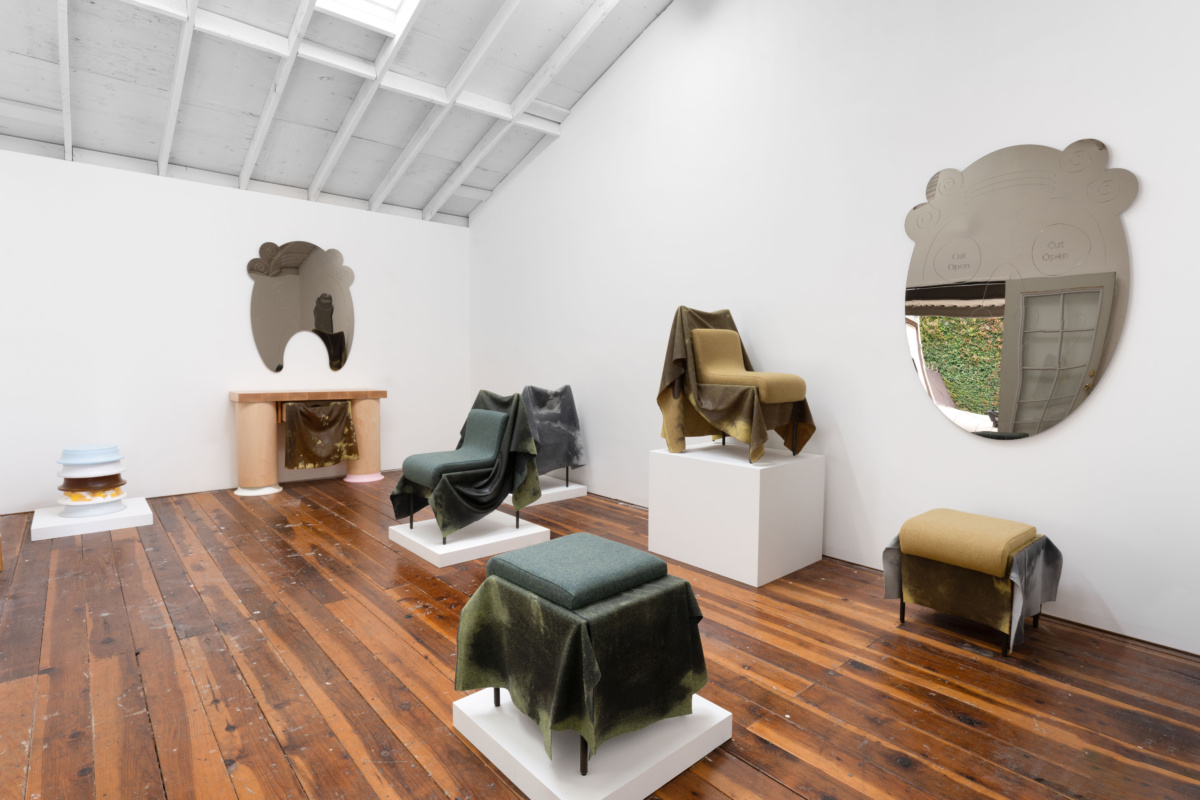
Installation of Wet Wool at Slow Ode gallery. Photo by of.Photo Studio
While the woodwork, resin castings, and steel frames for the chairs and stools were in Caleb’s wheelhouse, he wanted Wet Wool to take risks. “The majority of the fabrication work that I do involves wood, saws and sawdust. Those are my tools,” Caleb explained. “It was interesting and exciting to me to get away from that, to think about making an upholstered piece, something I’ve never done.”
Caleb collaborated with Sander Lak, the former creative director of Sies Marjan who has designed a line of textiles for Maharam. They carefully chose a wool that was durable enough to hold the resin, but light enough to retain its form. They settled on warm earth tones, and the colors transformed when dipped into the resin, as if dyed. The wet, darker hues became cemented into the fabric, with lighter, untouched edges standing out in contrast. These sections of the wool are like an Achilles’ Heel, fragile sections in an otherwise tough body.
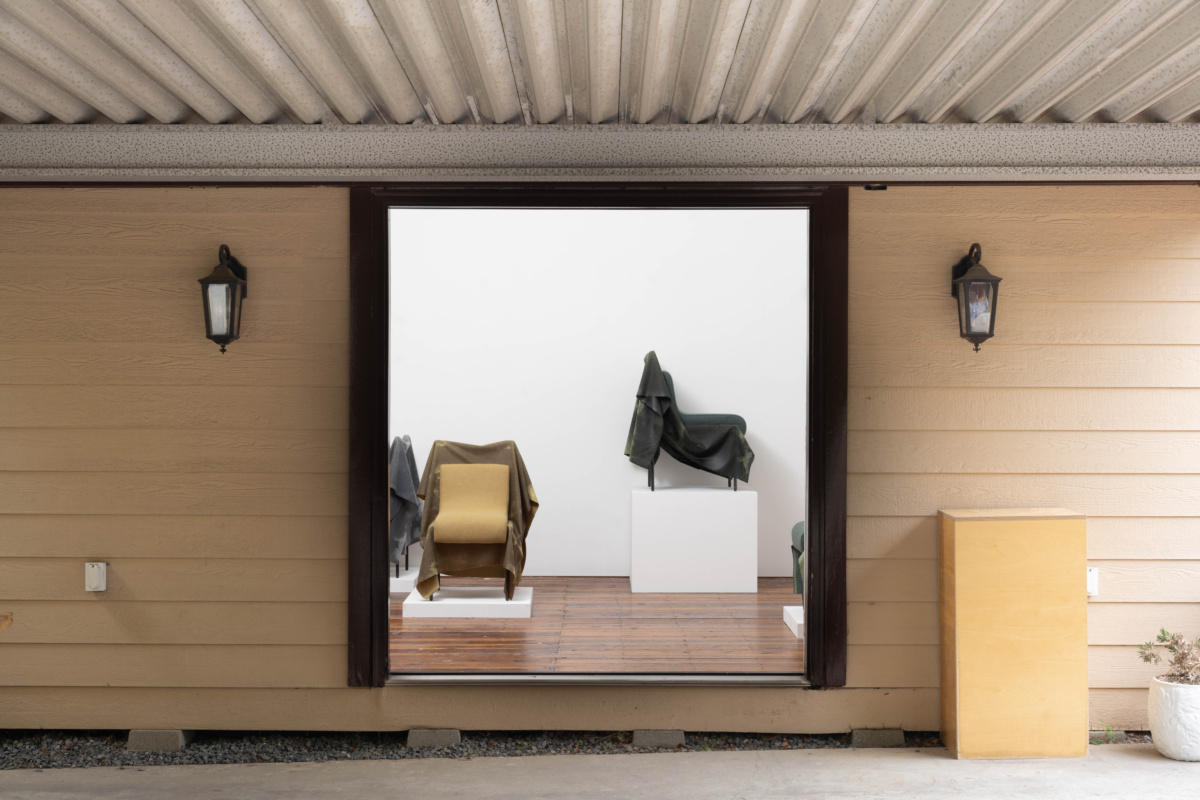
Installation of Wet Wool at Slow Ode gallery. Photo by of.Photo Studio
Those vulnerable characteristics help personify the furniture, which Caleb sees as a representation of himself. “When I make one of these chairs or stools, there’s an ‘alright, here we go, let’s see if this works’ moment, like I’m about to step on the stage,” he said.
No pieces better communicate this than the collection’s two mirrors, “Frown Mirror (make your own drama mask)” and “Smile Mirror (make your own drama mask),” which employed a laser cutter to etch the pattern for Greek theater masks into bronze tinted acrylic. With the instructions for the paper masks still visible, like “cut open,” the masks break the fourth wall by calling attention to their artifice.
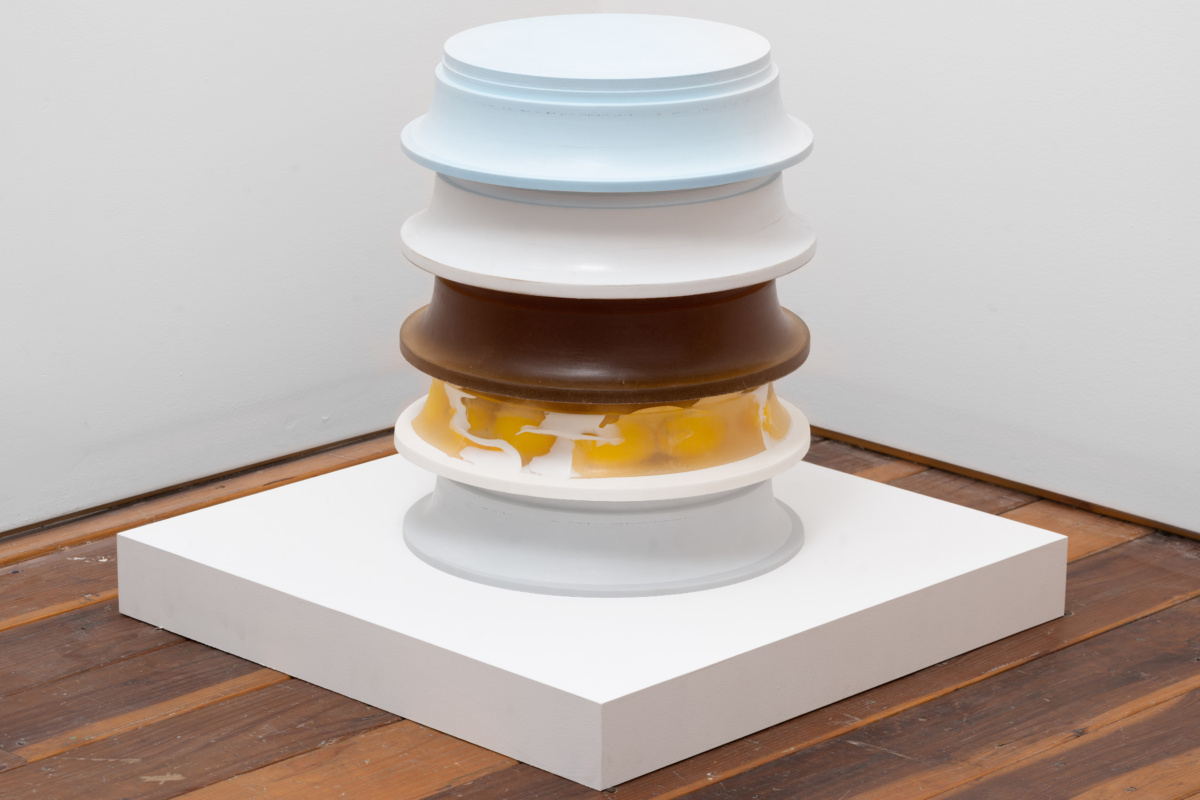
Wet Wool Feet (stackable side table). Photo by of.Photo Studio
Wet Wool is a limited run performance. Caleb has only made one edition of each piece, but he is open to commissions. He foresees Rest Energy introducing its next collection this fall, though he is unsure how the production will form. Right now he’s focused on taking new risks and selling out seats.
